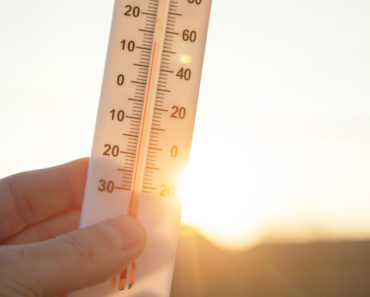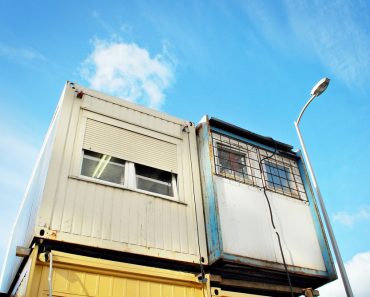With winter upon us, any power outage means we’re without heat. Depending on where you are and just how cold it is, it can take anywhere from hours to days for your home to cool down and your family to start complaining about being cold. Of course, they’ll start complaining long before the cold gets to be a serious problem; but that doesn’t mean you can ignore it.
In reality, it should be a couple of days before your home gets cold enough that it truly becomes a survival concern. Our bodies can withstand more cold weather than we think; we’ll just be a bit more uncomfortable than we want to be. We’re spoiled and we like it that way. So are our families.
While we can live through our homes getting a bit chilly, that doesn’t mean that we should ignore the cold. Being cold can lead to hypothermia. I only mention that about us being spoiled to make us stop and think just how warm we need our homes to be, in a survival situation. Since it’s unlikely that we’ll be able to heat the whole house up to the point that we’re accustomed to, it’s a good thing we can survive without it being that warm.
The typical answer in the prepping community is to use a wood fire to heat our homes, when the power goes out. I’m a firm believer in that and have the wood-burning stove to prove it. I also have portable propane heaters I can use for other parts of the house. Even so, I really can’t heat things up as well as my central HVAC system can. However, there are other things we can do to augment our heat, helping to keep us more comfortable.
Wear Warm Clothes
Once upon a time, people would dress for cold weather. They didn’t depend on their HVAC systems to keep the temperature in the “comfort zone;” they dressed warm. We all probably have a number of sweaters in the dresser and some of us haven’t worn them in years. Yet when the heat is out, those sweaters are invaluable. Two or three layers of sweaters can keep you warmer than a jacket, especially since you’ll be inside, where there’s no wind.
We’ve all heard “the Night Before Christmas” and the line “Ma in her kerchief and I in my cap.” Did you know that people actually slept like that? When it’s cold, that cap can do more to keep you warm in bed, than the best blankets can. They say that one-fourth of our body’s blood supply goes to the head, so if you’re feet are cold, put on a hat. There’s nothing wrong with wearing a stocking cap indoors when it’s cold.
Stay Close to the Fire
This one is so obvious as to be easily overlooked. We see pictures depicting families sitting around the fire, during pioneering times, but don’t even think of why they were doing that. Yet it was commonplace for the family to gather around the fire, especially in the evening, after all the chores were done. That fire provided light for small tasks, like sewing and knitting, as well as keeping the family warm. The rest of the house might not have been that warm.
Living in a home without central heat requires some lifestyle adjustments; most especially staying close to the source of heat. That may not seem like a big deal during the daytime, when it’s not really all that cold; but it sure is at night. For that matter, it’s even more important in the early morning, just after rekindling the fire and before the fire has had a chance to warm things up.
It may be necessary for the family to move their beds or at least their mattresses into whatever room has the fire and camp out. There’s nothing wrong with that. The mattresses can be moved back into the bedrooms in the morning, making room for daytime activities.
Pile on the Blankets
I rarely see anyone mention blankets in their lists of survival supplies. Nevertheless, blankets are important; even more important than sleeping bags. Those sleeping bags are great if you’re sleeping by yourself; but I don’t know too many couples that like sleeping by themselves, especially when its cold.
Old blankets should never be thrown out, even if they’re ratty. They can always serve as extras, buried beneath the nice ones when you put them on the bed. Ratty ones will still keep you warm; they just don’t make for good home décor.
If you don’t have enough blankets, buy some. Check out your local Salvation Army or Goodwill store. They usually have a few. If they don’t have any, there are plenty of discount stores where you can buy throws and blankets cheap. They don’t have to be beautiful; they just have to be warm. Layering a bunch of thin blankets will do more to keep you warm than one thick one.
Share Body Heat
The more bodies there are under those blankets, the better they’re going to work. That doesn’t just mean at night either; cuddling under the blankets on the sofa is nice and warm too. Two people together are going to be a whole lot warmer than one alone.
In olden times, the kids all slept together in one big bed, with the older kids on the outside and the younger ones in the middle. Even though this might seem strange and even dangerous by today’s standards, it worked for them. But then, that was a time when kids weren’t getting sexually involved as young as they are today.
There’s a Reason to Have a Loft
Many colonial and pioneering era homes were built so that they had only one big room, with a loft. Having a single room made it easier to heat the home with a single fireplace or wood-burning stove. Only wealthy people could afford to heat multiple rooms. Even though they had only one room, they were typically built with a loft. That’s where the kids would sleep, as the heat from the fire would rise, making it the warmest part of the house. Mom and dad would have their bed below the loft, giving them a modicum of privacy.
It’s all but impossible to add a loft to an existing house, unless you have a cathedral ceiling. But if you’re planning on building a house, this may be something to consider. A cathedral ceiling over the living room, with a hallway giving access to a row of bedrooms, provides a way of getting more mileage out of a wood-burning stove. If you install an oversized stove (based on the BTU heat output) it will work even better.
Use a Bedwarmer
Before jumping in bed at night, people back then would warm the bedsheets with a bed warmer. This looked like a frying pan with a lid and a long handle. Most people think that coals were put in the bed warmer to provide heat, but that’s incorrect. Coals in the bed warmer would get soot all over the sheets. To avoid that, they would warm rocks in the fire and put those in the bed warmer. It worked the same as coals would, but without the soot.
It’s not hard to find vintage bedwarmers today and some of them are even reasonably priced. If you’re going to be heating with wood anyway, there’s no reason not to use a bedwarmer to warm up the bed, before getting into it. Just take care to place it where the heat from it won’t damage anything.
Hot Water Bottles
In a way, we can say that the hot water bottle has replaced the bedwarmer, although few people actually use them to warm up the bed, before getting in. For that matter, I don’t know many people who use them at all today. Nevertheless, a generation ago, they were commonplace, especially for use by the aged and the infirmed. A hot water bottle can provide heat for anyone who is having trouble keeping warm and if you have a fire, you’ve got a way of heating water.
Before silicone hot water bottles existed, they made something similar out of a variety of different materials, such as earthenware, copper, brass, and zinc. I mention these materials, more to get you thinking about what might have, which you could use, in place of an actual hot water bottle. The easiest idea I can come up with is a canteen, something that most of us already have.
The Amazing Soapstone
Finally, another useful toll out of the past for keeping warm was the soapstone. They would place soapstones in the coals of the fire, much like the rocks used in a bedwarmer. Once heated, the soapstone would be lifted out of the fire with tongs and placed in a cloth sling, making it portable.
One of the ways they would use this portable heat is to put it under the seat in the wagon. Those sitting on the seat would cover their legs with a blanket, holding in that heat. Other family members, sitting in the bed of the wagon, would sit with their backs to the seat, so that they could benefit from the soapstone’s heat as well.
When the family went to church, they’d bring their soapstone in, setting it under the pew and again covering their legs with a blanket. Some fancier churches had boxed-in family pews, which would help hold the heat in too.
While I’m not suggesting putting a soapstone under the seat in your car, there are a number of ways we could make use of this same idea around the house, when personal heat is needed in other parts of the house. For example, bringing a heated soapstone into the home office would allow someone who works from home to work more comfortably. A little creativity can go a long way.




























